The 2026 AI Tools Stack for Content Teams
Sep 23, 2025 | 6 min read

This guide shows a simple AI tools stack for 2026. It explains what each tool does, why it matters, and how to connect them so you can move fast and stay audit ready.
Quick Answer
- Content hub and DAM (digital asset management): Use Sitecore Content Hub or Adobe Assets to create variants, localize, reuse, and version content with workflows.
- Provenance: Add C2PA (Coalition for Content Provenance and Authenticity) Content Credentials so media shows origin and edits. (C2PA)
- Agentic assistant: Use Gradial to create and update content across channels, then send drafts into your hub for review. (gradial.com)
- Claims and regulated content: Use Veeva PromoMats for pharma claims and references. Use Sitecore to manage approved statements for most other regulated markets. (Veeva Systems)
- Safety and guardrails: Block risky prompts and outputs with Amazon Bedrock Guardrails or Google Vertex AI safety filters. (AWS Documentation)
- Observability and evals: Log prompts, model versions, and outputs with LangSmith so you can trace and score quality. (LangSmith Docs)
- Experimentation: Use Sitecore Personalize or Adobe Target to A/B test changes when you publish. (Adobe Target) (Sitecore Personalize)
Related: For reusable, approved statements, read “Build a Pre-Approved Claims Library by 2026: Modular Content Blocks That Ship Faster.”
1) Content hub and DAM: one place for truth
Plain answer: Create, reuse, and approve in one system.
- Variants and reuse: In Sitecore Content Hub CMP (Content Marketing Platform) you can make variants for markets and channels, localize, and reference other items to cut copy-paste work. (Sitecore Documentation)
- Versioning and workflows: Use DAM versioning and workflows so teams always use the latest approved file. (Sitecore Documentation)
Give marketing, legal, compliance, and IT access to the same hub so everyone sees the same record.
2) Content provenance with C2PA
Plain answer: Show where media came from.
- C2PA Content Credentials add verifiable info to images and video so partners and platforms can check origin and edits. (C2PA)
3) Agentic content assistant: Gradial
Plain answer: Let an assistant draft and update, then review in your hub.
- Gradial focuses on agentic content operations. It helps create and refresh content, then pushes drafts into your stack for approval. (gradial.com)
4) Claims and regulated content: pharma vs. everyone else
Plain answer: Use the right tool for your rules.
- Pharma: Use Veeva PromoMats for a claims library, claims auto-linking, and references that travel with each asset. This is built for medical, legal, and regulatory review. (Veeva Systems)
- Other regulated markets: Use Sitecore Content Hub to store approved statements as reusable content with sources. Use variants and references to keep statements consistent across pages and locales. (Sitecore Documentation)
Related: For the claims approach and tags, see “Build a Pre-Approved Claims Library by 2026.”
5) Safety and guardrails
Plain answer: Stop risky text before it ships.
- Amazon Bedrock Guardrails: Set safety and privacy rules once. Apply them across models on both prompts and responses. (AWS Documentation)
- Vertex AI safety filters: Tune block thresholds by harm type for prompts and outputs. (Google Cloud)
Save your guardrail settings in your evidence pack.
6) Observability and evals
Plain answer: Track what happened and improve.
- LangSmith lets you trace runs, log prompts and model versions, and score outputs with evaluations. This helps compare tools and prove quality over time. (LangSmith Docs)
7) Experiment when you publish
Plain answer: Test in the real world.
- Sitecore Personalize and Adobe Target give you feature flags and A/B tests so you can safely try changes on web and apps. (Adobe Target) (Sitecore Personalize)
Want a fast stack plan and pilot? Book a CI Digital working session. We will connect Sitecore, Gradial, and your guardrails, and set a shared scorecard.
60-day plan
Weeks 1–2
- Connect Sitecore Content Hub. Turn on variants, references, and required fields for owners and approvals. (Sitecore Documentation)
- Start a model log with fields for prompt, model and version, settings, sources, output link, reviewer, changes, and flags.
- Create an evidence pack folder for policies, logs, provenance, and tests.
Weeks 3–4
- Configure Bedrock Guardrails or Vertex safety filters for your top use cases. Save the configs. (AWS Documentation)
- If you work in pharma, add PromoMats claims and references. If not, add approved statements in Sitecore as reusable content. (Veeva Systems)
Weeks 5–6
- Add Gradial so drafts land in your hub for review. (gradial.com)
- Turn on C2PA where your tools support it. (C2PA)
- Set a shared scorecard: first-pass approval rate, policy flags per 100 assets, content velocity per week, and cost per asset.
Related: Need the log fields and scorecard examples? Read “Proving Compliance and ROI: Evidence Packs, Model Logs, and A/B Tests for AI Content.”
Plain-English Definitions
(Place at the end or in a sidebar.)
- CAIA (Colorado Artificial Intelligence Act): Colorado state AI law. Start date is June 30, 2026. (Hunton Andrews Kurth)
- DAM (Digital Asset Management): A library for storing, approving, and sharing media files. (Sitecore Documentation)
- CMP (Content Marketing Platform): Part of Sitecore that helps plan, create, and reuse content. (Sitecore Documentation)
- C2PA (Coalition for Content Provenance and Authenticity): A standard for Content Credentials that prove media origin and edits. (C2PA)
- Guardrails: Safety settings that block risky prompts and outputs. (AWS Documentation)
- Observability and evals: Tools to trace what the AI did and score results. (LangSmith Docs)
Conclusion
A clear tools stack helps you move fast and stay safe in 2026. Use Sitecore Content Hub or Adobe Assets for creation and reuse, Gradial for assist and updates, PromoMats for pharma claims, platform guardrails for safety, C2PA for proof on media, LangSmith to trace and score, and Sitecore Personalize or Adobe Target to test what works.
Ready to design your 2026 AI tools stack and pilot it in your environment? Book a CI Digital working session. We will set up the integrations, scorecard, and evidence pack with the tools you already own.
Let’s work together



 Gradial
Gradial  PEGA
PEGA 





